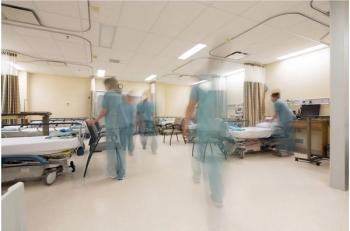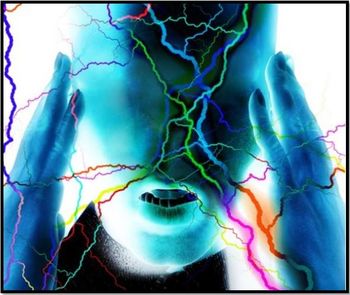
Migraine Patients Need to Hear: It’s Physiologic and Treatable
From PAINWeek 2017: Reflex vasodilation is out, neurobiologic dysfunction is in as explanation for migraine etiology.
[[{"type":"media","view_mode":"media_crop","fid":"63126","attributes":{"alt":"","class":"media-image","id":"media_crop_9646605397131","media_crop_h":"0","media_crop_image_style":"-1","media_crop_instance":"8050","media_crop_rotate":"0","media_crop_scale_h":"0","media_crop_scale_w":"0","media_crop_w":"0","media_crop_x":"0","media_crop_y":"0","style":"width: 400px; height: 230px;","title":"©Mopick/Shutterstock.com","typeof":"foaf:Image"}}]]
Report from PAINWEEK 2017
The importance of reassuring migraine patients that their headache arises from physiologic changes and that treatments are available was emphasized by the speakers of a two-part session hosted by the American Headache Society at the PAINWeek 2017 meeting in Las Vegas, September 4-9.
Headache pain as well as premonitory signs of migraine are manifestations of neurobiologic changes which have been characterized, indicated Kathleen Digre, MD, Director, Division of Headache and Neuro-Ophthalmology, University of Utah, Salt Lake.
“I think that’s pretty crucial, because now we can say to our patients, `this is not a figment of your imagination’,” she said.
There are a variety of sensations which can be premonitory signs of impending migraine, Digre indicated. Although nausea, and light and sound sensitivity are commonly associated with migraine, Digre pointed out that it is not unusual for migraine to be preceded by yawning, polyuria, neck pain, mood change, and complaints that “even my hair hurts” in the circumstance of cutaneous allodynia.
...it is not unusual for migraine to be preceded by yawning, polyuria, neck pain, mood change, and complaints that “even my hair hurts” in the circumstance of cutaneous allodynia.
A new paradigm
Previous theories implicating vascular changes for migraine have been refuted with newer evidence from brain scan and neurologic function assessments, Digre explained. The theory that migraine pain is due to reflex vasodilation following an aura caused by cerebral vasoconstriction is inconsistent with current evidence. Cerebral and meningeal blood vessels are not dilated during migraine attacks induced by nitroglycerin or sildenafil or in spontaneous attacks. Further, effective treatment with sumatriptan does not constrict cerebral blood vessels and some drugs that induce significant cerebral vasodilation (eg, vasoactive intestinal peptide) do not cause migraine.
“We have to put this old model aside, and realize that this is a brain phenomenon,” Digre said.
Brain scans during migraine attacks have demonstrated activation of the hypothalamus, brain stem, and “waves” to the cortex (possibly underlying complaints of “being unable to think” during attack). Digre cited a pivotal study tracking firing from the trigeminal-cervical complex which activated pain pathways in the hypothalamus.
“So, migraine, itself can be associated with neck pain just by the process of getting that trigeminal-cervical complex activated, and it tells us that it’s not just in the neck, but it’s in the actual process of the migraine,” Digre explained. “So I think it’s important for us to recognize that not every person with neck pain has cervical disc disease, (but) that it can be part and parcel of the process of migraine and not every person with neck pain needs an MRI scan of the neck.”
New therapeutic targets
Advances in the neurobiology of migraine are also leading to new therapeutic targets for interrupting the cascade of neurological events underlying migraine, Digre indicated. Among these targets is calcitonin gene-related peptide (CGRP). CGRP has been found to be elevated in cranial circulation in severe, acute migraine as well as in chronic migraine. Infusion of CGRP triggers migraine, while CGRP receptor antagonists abort acute attacks.
[[{"type":"media","view_mode":"media_crop","fid":"63127","attributes":{"alt":"","class":"media-image media-image-right","id":"media_crop_8149213417605","media_crop_h":"0","media_crop_image_style":"-1","media_crop_instance":"8051","media_crop_rotate":"0","media_crop_scale_h":"0","media_crop_scale_w":"0","media_crop_w":"0","media_crop_x":"0","media_crop_y":"0","style":"height: 262px; width: 350px; float: right;","title":"©Giovanni Cancermi/Shutterstock.com","typeof":"foaf:Image"}}]]Digre described several promising phase II and III clinical trials with monoclonal antibodies directed against CGRP or its receptor. The 4 CGRP inhibitors in development will be the first ever targeted preventive migraine therapies. “It’s probably the new revolution in the treatment of migraine that’s out there,” she said.
The acute treatment of chronic migraine with products that are currently available was discussed by Thomas Ward, MD, emeritus professor of neurology, Geisel School of Medicine at Dartmouth, Hanover, NH.
Ward began, however, with concerns about inadequate access to, and insurance coverage of treatments. With insurance payment ceilings on the number of triptan doses in a month, for example, migraine patients will often use a non-steroidal anti-inflammatory drug, or even cut and use a (sub-therapeutic) fraction of the triptan tablet to “save” a full triptan dose for a bad attack.
“Of course, the problem at the start of the headache is you don’t know how bad the attack will be,” Ward said.
The goal, Ward said, is to achieve a “clean kill” of the headache with effective treatment administered early in onset. There is less recurrence when treatment effectively stops the onset of symptoms than when even a mild headache ensues. Although the prescriber must guard against overuse of the medication, Ward cautioned, effective treatment given early can prevent disability as well as recurrence, reduce the need for rescue, and may reduce the risk of allodynia.
Newsletter
Enhance your clinical practice with the Patient Care newsletter, offering the latest evidence-based guidelines, diagnostic insights, and treatment strategies for primary care physicians.






















































































































































































































































































































